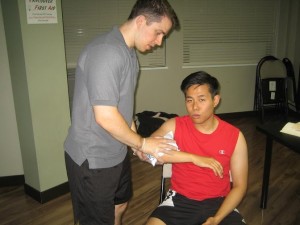A crush injury occurs if a body part is caught or crushed between heavy objects such as a steel girder, boulder or a vehicle.
The force or pressure on the body part can result to intense pain, bleeding, bruising, fractured bones and damage to the nerves. In most cases, localized tissue damage is only observed.
What are the causes?
A crush injury can be brought about by various factors including:
- Vehicular accidents
- Sports-related injuries
- Fall injuries especially those who are overweight or heavy
- Occupational-related injuries particularly those who work with mechanical tools or equipment
- Dropping heavy objects onto the foot
- Jamming of hands or fingers in windows or doors
Some injuries are relatively minor while others can lead to significant harm and even death.
What are the indications?
The usual indications of a minor case of crush injury might include the following:
- Bleeding and bruising
- Moderate pain
- Hairlines fractures
Place an ice pack on the site to lessen the pain and swelling. - An isolated body part or limb might be involved
The signs of a major injury might include the additional symptoms such as:
- Open wound injury
- Serious pain and bleeding
- Evident visual deformities
- Compartment syndrome
- Fractures that might be severe or compound
- Crushed skin tissues, bones and muscles as well as nerve damage
- Hypothermia
- Numbness and paralysis of the affected area
- Loss of consciousness
Management of a crush injury
Call for emergency assistance right away if:
- Due to a major trauma or vehicular accident
- Significant bleeding from the site of injury and even mangled body parts
- Injury to the head, back, neck or hip is suspected
- The end of a finger, limb or toe is turning blue or becomes insensitive
- There are signs of shock or the individual has difficulty breathing
- Unable to move or loses consciousness
In case the individual is still trapped under a compressive object or force, try to remove it in a safe manner without causing further injuries to the affected individual.
For a minor case of crush injury, the following must be done:
- Any visible wounds should be cleaned using water.
- Place an ice pack on the site to lessen the pain and swelling.
- Control any bleeding by placing pressure with a clean towel or sterile dressing.
- If a fracture is suspected, immobilize the site.
Quick Note / Disclaimer
The material posted on this page on a crush injury is for learning and educational purposes only. To learn to recognize the signs and how it is treated, register for a first aid and CPR course with Toronto First Aid.

